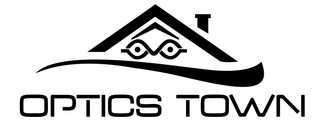How Much Is an Eye Exam? Comprehensive Cost Guide and What to Expect
Understanding the cost of an eye exam can help you plan your budget better and avoid surprises. Whether you're overdue for eye health check-ups or curious about costs, knowing what influences prices makes a big difference. Eye exams are a small investment for healthy vision and early detection of problems, so knowing what to expect saves time and money.

Factors Influencing Eye Exam Costs
Location and Geographic Area
Where you live impacts how much an eye exam costs. Prices tend to be higher in big cities compared to rural areas. For example, an eye exam in New York City might cost $150 or more, while in smaller towns, fees could be as low as $50. Regional differences across states also play a role, with some places affordability is much better than others.
Type of Provider
Not all providers charge the same. Seeing an ophthalmologist, the eye doctor who specializes in eye diseases, usually costs more than an optometrist or retail optical clinic. For instance, a visit to a specialist might be over $200, while a quick check at a retail chain could be under $100. If you need specialized services like glaucoma screening or contact lens fitting, expect the bill to climb higher.
Insurance Coverage and Medicare
Many insurance plans cover eye exams, but coverage varies widely. Some plans cover the full cost, while others require a copay or deductible. Medicare generally covers exams for specific health issues but not routine eye check-ups for glasses. Always check your insurance policy to see what’s included to avoid unexpected expenses.
Additional Tests and Services
Extra tests add to the cost. If your eye doctor performs specialized procedures like digital imaging, glaucoma screening, or diabetic eye exams, you'll pay more. While these tests help catch problems early, they can sometimes double the base fee. Know what’s included before booking your appointment.
Average Cost Breakdown of an Eye Exam
Standard Eye Exam Costs
For a basic eye exam, expect to pay between $50 and $200 if you don't have insurance. Chain stores like LensCrafters or Walmart might offer exams at the lower end of this spectrum, often with promotions. Standalone clinics or private practices might charge a bit more, especially in urban areas.
Cost with Insurance
If you have vision insurance, your out-of-pocket cost usually drops significantly. Copays often range from $10 to $50. Keep in mind, some plans only cover exams every year or every two years, so check your policy details.
Luxury or Specialized Exams
Advanced eye health assessments or digital imaging can add $50 to $200 or more to your bill. These services are useful if you have eye health concerns or need detailed analysis. Be prepared for extra fees if your doctor recommends these tests.
How to Save Money on Eye Exams
Utilizing Insurance and Discounts
Use your insurance benefits to their fullest. Make sure your plan covers routine exams and take advantage of any discounts. Some providers offer bundle packages with glasses or contact lenses, which can cut costs.
Free or Low-Cost Eye Exams
Many community programs or local health departments offer free eye exams, especially for seniors, students, or low-income families. Some optical retail chains periodically run free eye exam days or discount promotions. Don’t hesitate to look around your area for these options.
Choosing the Right Provider
Compare prices between different providers. Sometimes, shopping around can save hundreds of dollars. But always prioritize quality care, especially if you have existing eye health issues. Cheaper isn’t always better if you need thorough testing or specialized treatment.
When to Get an Eye Exam and Recommended Frequency
Age-Related Guidelines
Children should have eye exams before starting school and every one to two years afterward. Adults generally need a check-up every two years; seniors, especially over 60, should go annually or more frequently if advised by their doctor.
Signs You Need an Eye Exam
Sudden vision changes, floaters, eye pain, or headaches might signal urgent problems. If your eyes feel dry, blurry, or if you notice halos around lights, schedule an eye exam soon. Early detection can prevent permanent damage.
Routine Care and Annual Check-Ups
Even if your vision seems fine, routine exams catch problems early. Regular visits help maintain good eye health, prevent issues, and ensure your glasses or contacts are up to date.
Conclusion
The cost of an eye exam varies based on where you live, your provider choice, and your insurance coverage. Basic exams typically cost between $50 and $200, but extra services and specialized testing can push the bill higher. To save money, explore insurance benefits, look for free clinic programs, and compare prices wisely. Regular eye exams are a small investment in your overall health, helping you see clearly and catch problems early. Make it a priority—your eyes will thank you. Check more things you want to know about optical eyeglasses.

